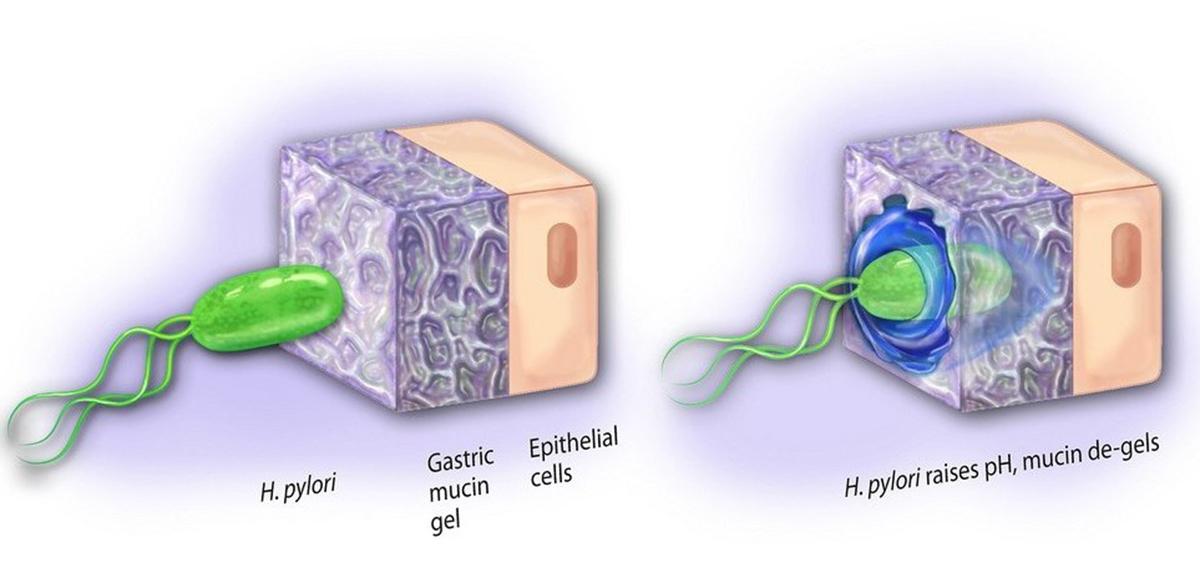Table of Contents
As any other bacterium that causes disease, H. pylori has the ability to infect people using different mechanisms, which allow it to survive in hostile environments and to stay inside our stomach without being detected or affected by our body’s defense mechanisms.

Sticky and tough
This microorganism has developed several strategies to infect and live in the stomach and in the first part of the small intestine of humans. It has the ability to stick in between the layers of the gastric mucosa in order to avoid our immune system. In fact, it provokes an over activation of our defense mechanisms, causing chronic inflammation of the gut.
The gut environment is very hostile. It is mainly acidic and it is very hard for microorganisms to survive under those conditions. This is not a problem for H. pylori, because it produces a substance called urease, which neutralizes the acids in our stomach.
Imagine this! Ammonia is toxic to our stomach cells and affects its function, promoting an alteration in the normal production of gastric acids and the eventual development of gastritis and ulcers.
More about H. pylori infection
Infection by H. pylori is not easy to detect. Most of us would have H. pylori in our stomachs but never develop any symptoms, although this really depends on how resistant the person’s immune system is to the infection.
If you have H. pylori infection it is likely that you will live with it for the rest of your life if you don’t get any treatment, but this would depend on how your disease progresses, or if you experience any symptomatology at all.
See Also: New Breath Test Detects H.Pylori in 10 minutes
If you get diagnosed with H. pylori infection, you will get a mix of antibiotics to kill the bacteria, and medications to control the acidic conditions of your stomach and prevent further damage to the lining.
It is not yet well known how this bacterium can lead to cancer but it has been mainly related to chronic inflammation promoted by the bacterium, which makes normal cells turn into malignant cells.
- AHMED, N. 2005. 23 years of the discovery of Helicobacter pylori: is the debate over? Ann Clin Microbiol Antimicrob, 4, 17
- DUNN, B. E., COHEN, H. & BLASER, M. J. 1997. Helicobacter pylori. Clin Microbiol Rev, 10, 720-41
- MARSHALL, B. J. 2001. One Hundred Years of Discovery and Rediscovery of Helicobacter pylori and Its Association with Peptic Ulcer Disease. In: MOBLEY, H. L. T., MENDZ, G. L. & HAZELL, S. L. (eds.) Helicobacter pylori: Physiology and Genetics. Washington (DC).
- Photo by shutterstock.com
- Photo courtesy of National Science Foundation by Flickr : www.flickr.com/photos/nsf_beta/4822021538


Your thoughts on this